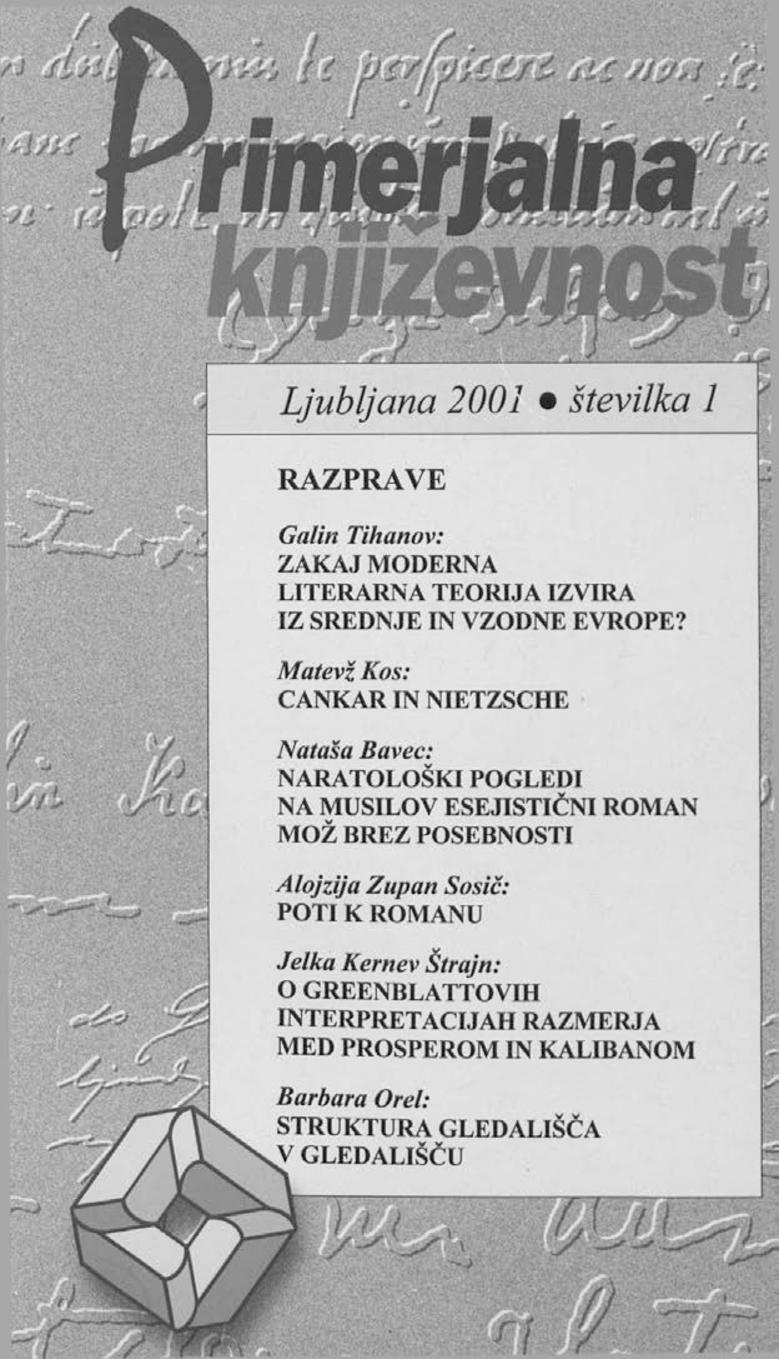Paths to a Novel. Genre Syncretism in the Modern Slovene Novel
Keywords:
Slovene literature, Slovene novel, types of novels, 1990–2000Abstract
Syncretism is the oldest invariable of the novel. In the last decade of the 20th century the only regular novelistic feature is most visible in the contemporary Slovene novel in the genre syncretism of novelistic structures, which combines different genres. – Genre hybridism, or the interrelatedness of various novelistic genres within one novel, has balanced different narrative procedures, and by tending to have a dominant genre foundation, “built” a clear storyline. Since the novel of the 1990s is a modified traditional novel, genre syncretism represents the most important transformed tendency for it, while, at the same time, it directs metaliterary paths to the novel through a multi-layered genre analysis. In the novels of young authors (born after 1958) this has pointed towards renewed positions of traditional genres (anti-utopian, horror, historical, crime, travelogue, love and socio-critical novel) and interesting novelties of this period (novels and novels of landscape fiction). – In addition to genre syncretism, there are two other important “transformers” of traditional genre formulas, the non-typical position of the narrator and an increased number of spoken passages. The transformational role of the narrator with an ironical-satirical perspective introduces a new (most often post-modernist) relation between the story and the reader, while the dynamic dialogues make the modern Slovene novel more like a screenplay. – The balanced union of the traditional and contemporary novelistic features has not only promoted the flowering of the Slovene novel, but at the end of the century, and with its increased reading appeal, it has also paved the way for a new reading.References
Brian ATTEBERY, 1991: »Fantasy and the Narrative.« Style 1, 28–41.
Roland BARTHES, 1987: S/Z. New York: Hill and Wang.
Robert-Alain de BEAUGRANDE, Wolfgang Ulrich Dressler, 1992: Besediloslovje. Prev. A. Derganc, T. Miklič. Ljubljana: Park.
Vladimir BITI, 1997: Pojmovnik suvremene književne teorije. Zagreb: Matica hrvatska.
Helmut BONHEIM, 1990: Literary Systematics. Cambridge: D.S. Brewer.
David FISHELOV, 1991: »Genre Theory and Family Resemblance – Revisited.« Poetics 2, 123–139.
David FISHELOV, 1993: Metaphors of Genre. The Role of Analogies in Genre Theory. Pennsylvania: Pennsylvania University Press.
Ralph FREEDMAN, 1968: The Possibility of a Theory of the Novel. The Disciplines of Criticism. New Haven, London: Yale University Press.
Gérard GENETTE, 1982: Palimpsestes: La littérature au second degré. Pariz.
Mary GERHART, 1989: »How to ’Belong’ to a Genre.« Poetics 4/5, 355–372.
Miran HLADNIK, 1995: »Temeljni problemi zgodovinskega romana.« Slavistična revija 1 in 2, 1–12 in 183–200.
Marko JUVAN, 2000: Intertekstualnost. Ljubljana: DZS. (Literarni leksikon 45).
Matjaž KMECL, 1996: Mala literarna teorija. Ljubljana: Založba M & N.
Janko KOS, 1983: Očrt literarne teorije. Ljubljana: DZS.
Janko KOS, 1983: Roman. Ljubljana: DZS. (Literarni leksikon 20).
Irena R. MAKARYK, 1993: Encyclopedia of Contemporary Literary Theory. Approaches, Scholars, Terms. Toronto: University of Toronto.
Tom MOYLAN, 19972: »Demand the Impossible: Science Fiction and the Utopian Imagination.« V: Bob Ashley: Reading Popular Narrative. London, Washington: Leicester University Press, 176–180.
Pavao PAVLIČIĆ, 1983: Književna genologija. Zagreb: Liber.
Milivoj SOLAR, 1989: Teorija proze. Zagreb: Liber.
Marcel ŠTEFANČIČ, jr., 1986: »Žanr obstaja.« Problemi 2, 37–40.
Tomo VIRK, 2000: Strah pred naivnostjo. Ljubljana: Literarno-umetniško društvo Literatura. (Zbirka Novi pristopi).
Alojzija ZUPAN SOSIČ, 1997/98: »Na literarnem otoku Berte Bojetu.« Jezik in slovstvo 7/8, 315–331.
Alojzija ZUPAN SOSIČ, 2000: Sodobni slovenski roman ob koncu stoletja. Doktorska disertacija. Ljubljana: Filozofska fakulteta, Oddelek za slovanske jezike in književnosti.
Katie WALES, 1990: Dictionary of Stylistics. London, New York: Longman.


